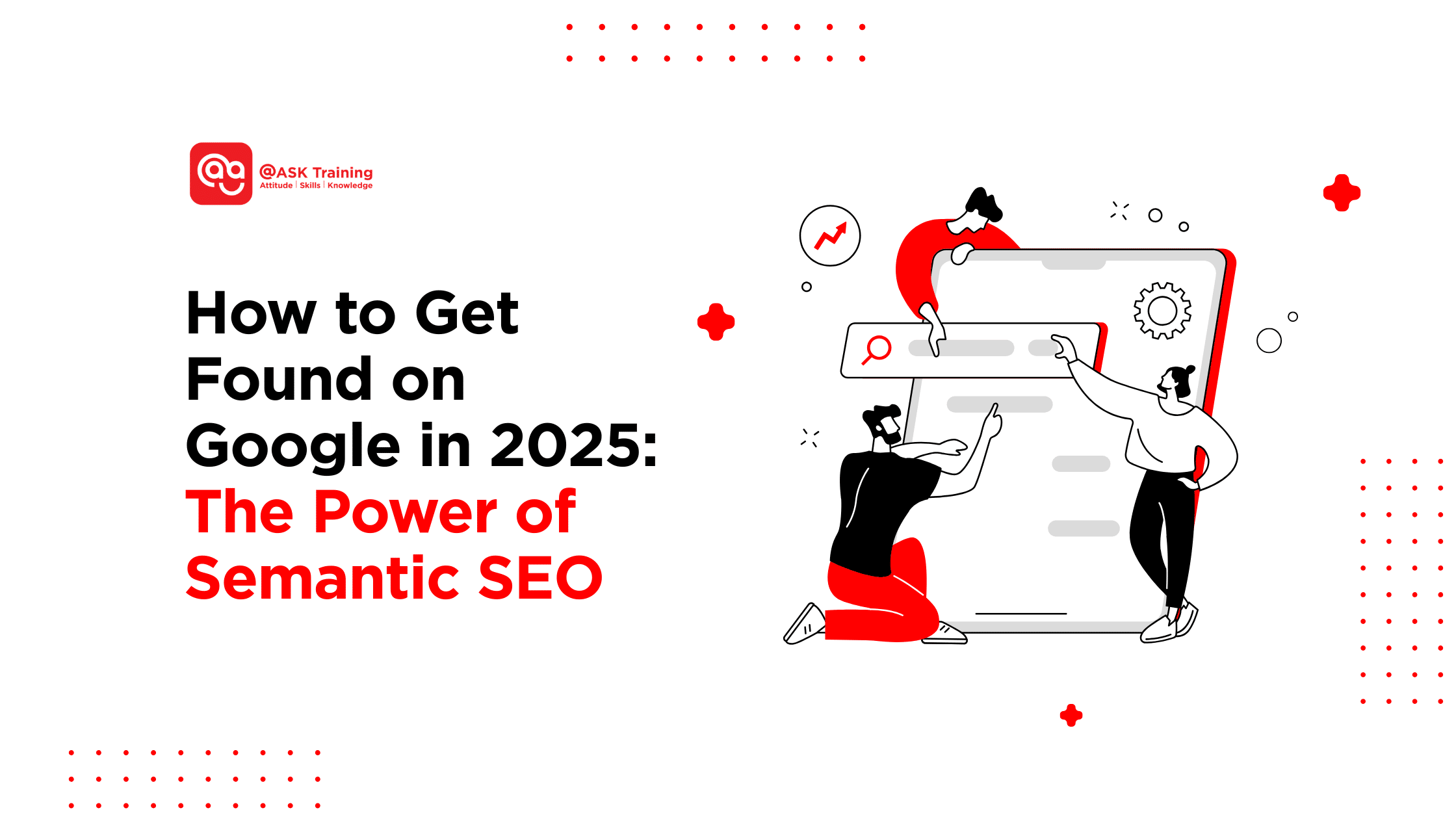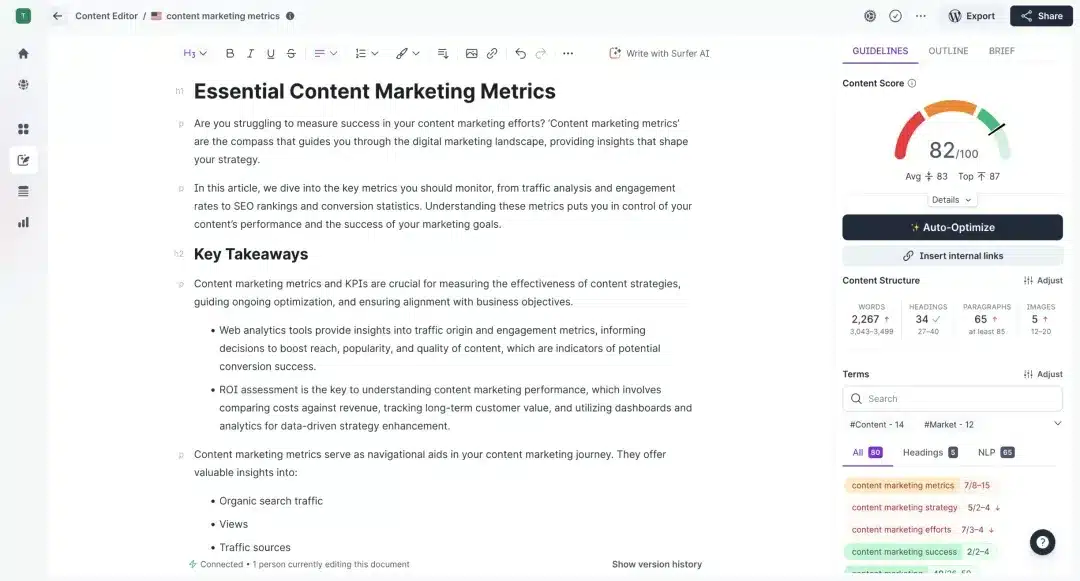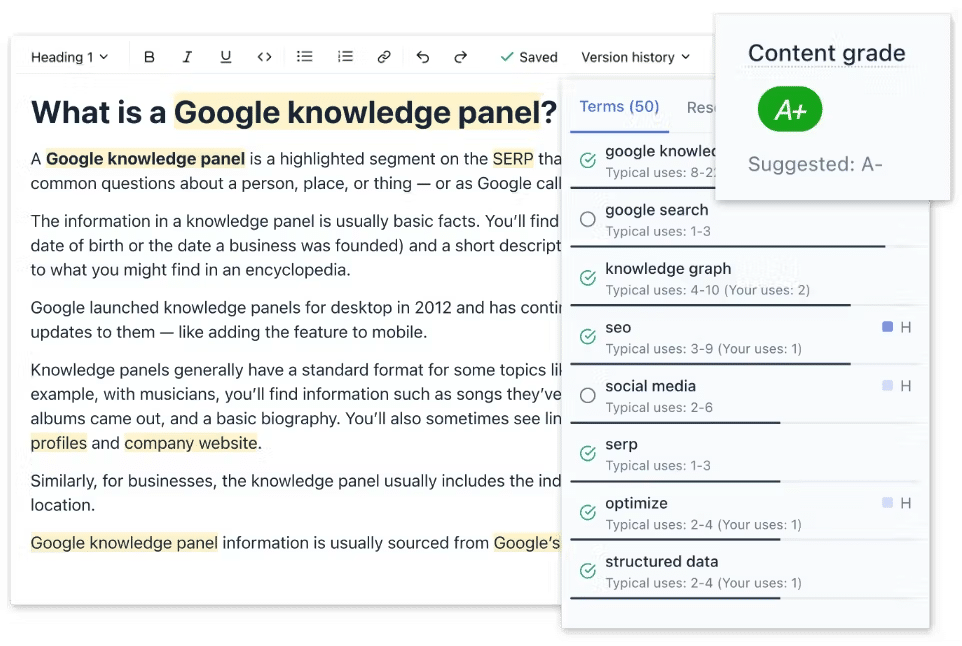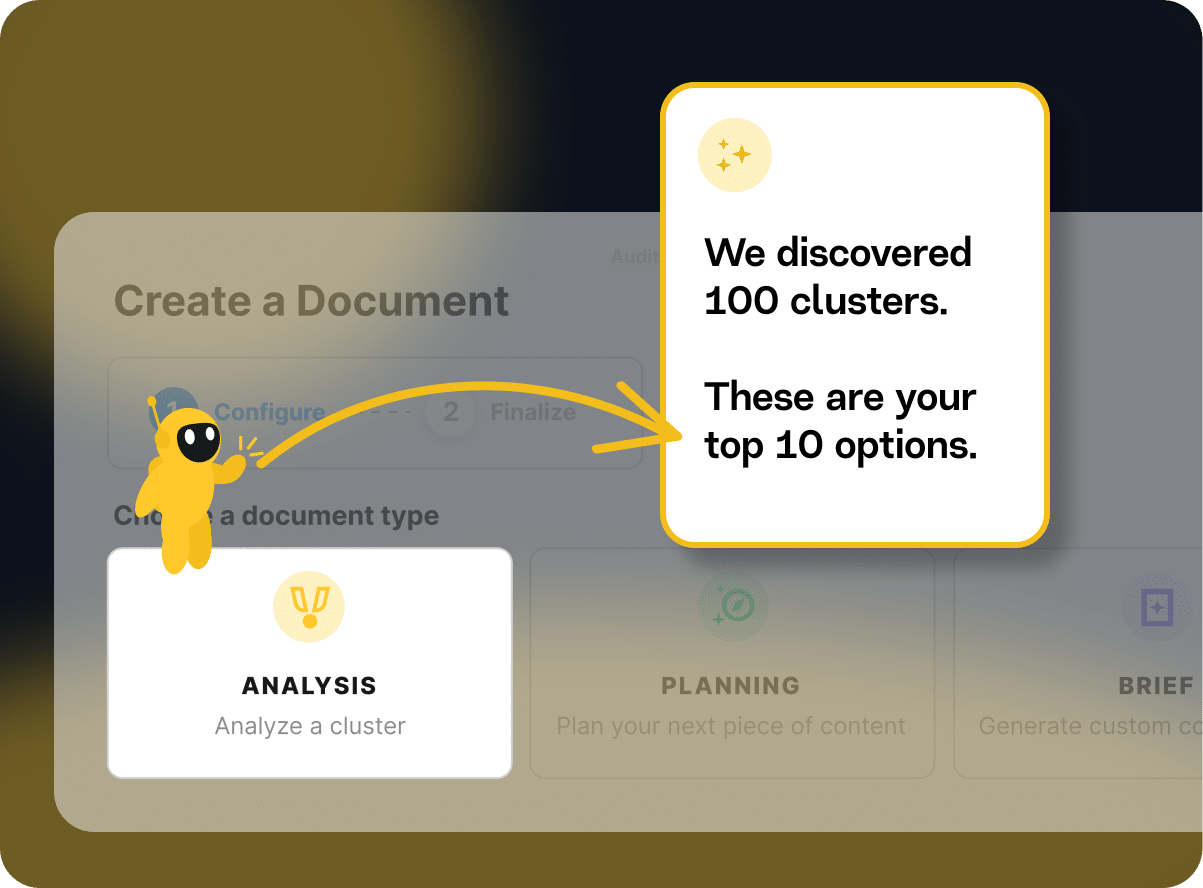
Search engines have evolved dramatically. From rudimentary keyword matching to sophisticated systems that understand meaning, context, and intent.
This shift is powered by semantic search, a smarter approach that leverages artificial intelligence to deliver more accurate and relevant results.
For digital marketers, SEO professionals, and content creators, adapting to this change isn’t just beneficial, it’s essential for staying competitive.
In this guide, we’ll explore how semantic SEO works, why AI is revolutionising search, and actionable strategies to optimise your content for Google’s evolving algorithms.
Now that we’ve set the stage, let’s dive into the fundamentals of semantic search and why it matters.
What is Semantic Search?
Semantic search refers to a search engine’s ability to interpret the intent and context behind a query rather than relying solely on exact keyword matches.
Where traditional SEO focused on exact phrase matches, semantic SEO recognises that:
- Different words can express the same concept (“car” vs “automobile”)
- Queries can have multiple interpretations (“apple” as fruit vs company)
- User intent varies significantly between searches
Why Semantic Search Matters for Your Content?
- Improves user experience by delivering more relevant results.
- Reduces reliance on keyword stuffing, focusing instead on natural language.
- Aligns with Google’s Helpful Content Update, which prioritises high-quality, informative content that demonstrates experience, expertise, authoritativeness, and trustworthiness (E-E-A-T).
Example:
A search for “plant-based diet benefits” now triggers results that understand related concepts like:
- “Advantages of vegan nutrition”
- “How vegetarian eating improves health”
- “Scientific studies on meatless diets”
With the basics covered, let’s examine how AI supercharges semantic search for even better accuracy.
How AI Enhances Semantic Search?
Artificial Intelligence is the backbone of modern semantic search, enabling search engines to process and interpret content like never before.
These aren’t just abstract concepts; they directly influence how your content gets evaluated and ranked.
Here’s how Natural Language Processing and Machine Learning work:
1. Natural Language Processing (NLP)
NLP allows search engines to:
- Analyse synonyms and related phrases (e.g., “footwear” vs. “shoes”).
- Understand long-tail queries and conversational language (e.g., voice search).
- Detect sentiment and contextual nuances.
Practical Impact:
The phrase “budget friendly laptops for students” might connect to content about:
- “Affordable notebooks for college”
- “Best value portable computers”
- “Cheap but durable Chromebooks”
2. Machine Learning and Continuous Improvement
AI models learn from user behaviour refining results over time. Google’s algorithms now learn from:
- Click-through patterns (what results users prefer)
- Dwell time (how long users engage with content)
- Search refinement (how queries evolve during a session)
Pages that satisfy user intent get reinforced in rankings, creating a virtuous cycle for quality content.
For example:
- If users consistently engage with video content for a query, Google may prioritise video results.
- If users frequently click on in-depth guides for a query, Google prioritises long-form content.
- Searches with local intent (e.g., “coffee shops near me”) trigger location-based results.
Understanding user intent (informational, navigational, commercial) ensures your content meets real needs.
Let’s dive in further.
Understanding User Intent in Semantic Search
User intent refers to the underlying goal behind a search query. Google categorises intent into three main types:
1. Informational Intent
- The user seeks knowledge (e.g., “how does semantic SEO work?”).
- Optimisation Tip: Create in-depth guides, tutorials, or blog posts.
2. Navigational Intent
- The user wants to find a specific website (e.g., “Facebook login”).
- Optimisation Tip: Ensure your brand name and key pages are easily discoverable.
3. Commercial Intent
- The user is researching before purchasing (e.g., “best CRM software 2025”).
- Optimisation Tip: Provide comparison guides, product reviews, or demo offers.
4. Transactional Intent
- Immediate purchase or action (e.g., “buy iPhone 15 Singapore”, “sign up for free trial”)
- Optimisation Tip: Combine structured data with action-oriented language (“Shop now”, “Download instantly”) and prioritise mobile UX.
Intent Identification Exercise
Try this for your target keywords:
- Search for the phrase in Google
- Analyse the top 3 results:
- Are they blog posts? Product pages? Videos?
- What content format dominates?
- What questions do they answer?
To further refine semantic understanding, search engines use advanced techniques like vector embeddings.
Vector Embeddings and Contextual Relevance
Vector embeddings might sound complex, however, understanding them gives you a significant advantage in content optimisation. These mathematical models are what allow search engines to grasp conceptual relationships between terms.
How They Work in Practice:
- Convert words to numerical representations
- Map semantic relationships between concepts (e.g., “car” and “automobile”)
- Group related terms in a multidimensional space
- Identify contextual usage patterns
How You Can Use This:
Focus on topic clusters rather than isolated keywords. Use variations and related terms naturally in your content.
Here are some examples:
When writing about “content marketing,” naturally include:
- “Blog strategy”
- “Audience engagement”
- “SEO writing”
Or when writing about “digital marketing”:
- “Content strategy development”
- “Social media advertising”
- “Email campaign optimisation”
While AI interprets meaning, structured data helps search engines better understand your content’s structure and purpose.
Structured Data: Speaking Google’s Language
Structured data, often implemented through schema markup, acts as a direct line of communication between your website and search engines.
While AI helps Google interpret content, structured data helps it categorise and display that content more effectively.
Without schema markup:
- Search engines must guess what your content is about.
- You miss opportunities for rich snippets (enhanced search results).
- Your content may not appear for relevant featured snippets or knowledge panels.
With structured data:
- Your pages stand out in SERPs with visual enhancements.
- Google understands your content’s context immediately.
- You can improve click-through rates (CTR).
Key Schema Types You Should Implement
Not all schema markup is created equal. These are the most impactful types of semantic SEO:
1. Article/Blog Post Schema
Best for: News sites, blogs, and publishers
What it does: Helps Google identify:
- Headline and publication date
- Author information, name and credentials (boosts E-E-A-T)
- Article body and key takeaways
- Featured image reference
Tip: WordPress plugins like Yoast or Rank Match can add this automatically.
2. FAQ Schema
Best for: Guide content, product pages, service businesses
What it does:
- Triggers FAQ rich snippets in search
- Increases visibility for question-based queries
- Improves voice search compatibility
- Answers questions directly in SERPs
Pro tip: Focus on questions people actually ask. Check “People also ask” boxes for ideas.
3. Product Schema
Best for: eCommerce stores and review sites
What it does:
- Displays price, availability, and ratings directly in search
- Increases CTR for shopping-related queries
- Helps Google understand product attributes
Structured data is no longer optional, it’s what separates good SEO from great SEO. By implementing just these 3 schema types:
- Your content stands out in search results
- Google understands and ranks your pages faster
- You outperform competitors who skip this step
Now that we’ve covered how to structure your content for search engines, let’s explore the AI tools that make semantic SEO implementation even easier.
AI-Powered Tools for Semantic Content Optimisation
Modern SEO isn’t about guessing, it’s about data-driven decisions. AI-powered SEO tools analyse top-performing content, identify semantic gaps, and reveal exactly what your audience wants.
Here’s how to utilise them strategically:
1. SurferSEO
Best for: Content structure optimisation
Key Features:
- Analyses top-ranking pages for semantic relationships
- Recommends related terms and optimal content length
- Scores your content against competitors
How to Use It:
- Input your target keyword
- Review the “Content Editor” suggestions
- Expand sections with semantically linked subtopics
Example:
For “home workout routine”, SurferSEO might suggest including:
- Equipment alternatives (resistance bands, dumbbells)
- Time-efficient exercises
- Recovery tips
2. Clearscope
Best for: Topic depth and clarity
Key Features:
- Identifies must-include terms for top rankings
- Evaluates content readability and relevance
- Integrates with Google Docs for real-time feedback
Pro Tip: Aim for a Clearscope grade of A- or higher by covering:
- Primary keyword variations
- Long-tail question-based queries
- Supporting evidence (studies, expert quotes)
3. MarketMuse
Best for: Comprehensive topic clusters
Key Features:
- Maps content gaps across your entire site
- Prioritises topics by strategic importance
- Tracks progress toward subject mastery
Implementation:
- Run a “Content Inventory” report
- Identify weak pages needing expansion
- Build internal links between related pieces
How These Tools Shift Your Strategy
1. From Keywords to Topics
AI tools reveal:
- Conceptual relationships (e.g., “keto diet” connects to “macros” and “electrolytes”)
- Missing subtopics competitors cover
- Optimal content structure for user satisfaction
Actionable Insight:
A page about “email marketing” should naturally include:
- List segmentation strategies
- A/B testing frameworks
- Deliverability best practices
2. From Queries to User Intent
These tools help you:
- Decode intent behind searches (informational vs. commercial)
- Align content with what users actually want
- Answer unasked questions proactively
Example:
For “best CRM software,” tools might reveal:
- Comparison tables are critical (commercial intent)
- Users want pricing transparency
- “Alternatives to [X]” is a rising related query
Implementation Checklist
- Choose one tool to start (Surfer for beginners, MarketMuse for enterprises)
- Analyse top 3 competitors for semantic patterns
- Revise one existing piece using AI recommendations
- Track rankings and engagement for 30 days
Having explored the fundamentals of semantic search, AI technologies, user intent decoding, and practical tools, it’s clear that modern SEO requires a paradigm shift.
These strategies aren’t just theoretical; they’re proven drivers of organic growth, as demonstrated by our case studies.
Now, let’s consolidate these insights into a clear action plan for immediate implementation.
Your Roadmap to Semantic SEO Success 2025
To help put what we’ve explored into an action plan, here are key steps you can take to implement semantic SEO effectively:
Step 1: Lay the Strategic Foundations
- Audit existing content for semantic gaps using tools like MarketMuse
- Align content with user intent (informational/commercial/navigational)
- Strengthen E-A-T signals (Expertise, Authoritativeness, Trustworthiness) by:
- Showcasing author credentials
- Citing reputable sources
- Demonstrating first-hand experience
Step 2: Implement Core Technical Elements
- Add structured data markup to at least five high priority pages this month
- Build topic clusters (one pillar page + three to five supporting pieces)
- Optimise for voice search by:
- Using natural Q&A formats
- Targeting long-tail, conversational queries
- Implementing FAQ schema where relevant
Step 3: Leverage AI for Continuous Optimisation
- Refresh content monthly using SurferSEO or Clearscope insights
- Conduct quarterly semantic gap analyses to uncover new opportunities
- Monitor SERP feature performance (featured snippets, knowledge panels)
Step 4: Measure What Truly Matters
Track these key metrics monthly:
| Metric | Target Improvement | Tool to Use |
| Rankings for semantic variations | +15% | SurferSEO (Content Editor) |
| CTR from rich results | +20% | Google Search Console |
| Dwell time | +30 seconds | Google Analytics |
| Content completeness | Grade A- or higher | Clearscope |
These steps lay a clear path for implementation, however, true success in semantic SEO requires more than just tactics, it demands a fundamental shift in how we approach search.
Let’s wrap up.
Wrapping Up
In 2025’s search environment, depth of understanding beats superficial keyword matching.
Key Takeaways:
- Prioritise meaning over keywords: Optimise for topics and user intent, not exact-match phrases.
- Structure for both humans and machines: Use schema markup and AI tools to make your content effortlessly understandable.
- AI is your ally: Tools like Clearscope and SurferSEO reveal gaps and opportunities you’d otherwise miss.
- Measure what matters: Track semantic rankings, rich snippet performance, and engagement metrics.
Your Next Steps:
- Start small: Audit one key page this week using the strategies above.
- Iterate: Refine based on data, not guesses.
- Stay curious: Semantic search will keep evolving, commit to learning.
Here’s your roadmap recap. Save it and track your results:
By implementing these semantic SEO strategies now, you’re not just optimising for today’s algorithms, you’re building sustainable visibility for years to come!
Ready to Put These Semantic SEO Strategies into Action?
Master the techniques covered in this guide with @ASK Training’s SEO and Website Analytics and Optimisation courses including:
- Search Engine Optimisation (SEO)
- Advanced Search Engine Optimisation
- Website Landing Page Optimisation
- Digital Marketing Analytics (GA4)
- Advanced Digital Marketing Analytics
Our hands-on programmes equip you with skills that work in today’s digital environment, from driving organic traffic and improving search visibility to converting visitors into customers.
Get in touch with us today and future-proof your content strategy!
Related Courses
- WSQ Search Engine Optimisation Course
- WSQ Advanced Search Engine Optimisation Course
- WSQ Digital Advertising Course
◆◆◆




